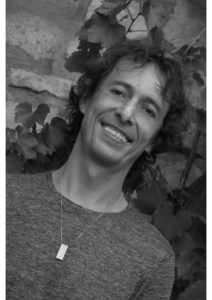Par le docteur Frank Giraudeaux
Exprimez votre beauté intérieure, votre bien-être et votre sérénité grâce à Sensory Brain Training.

In this day and age, more and more importance is given to physical appearance, and keeping our body in shape through different activities or sports is playing an ever more important, and justified, role in our lives. However, there is another, neglected yet fundamental, protagonist: our nervous system. It is important to be aware that our nervous system, via the regulating centres located at the base of our brain, guarantees the subconscious and involuntary control of our three main life systems: our vegetative system (digestion, thermoregulation, respiration, secretions, etc.), our relationship or motor sensors (sight, hearing, touch, etc.) and our psychological activity. Furthermore, the nervous system is closely linked with our immune system and is therefore a key player in maintaining our health, our identity, and in fighting premature aging.
In the middle of the 20th century, French researcher and educator Georges Quertant showed that a large portion of the population presented a defect in the regulatory nerve centres at the base of the brain. This defect leads to decreased nerve potential and the appearance of functional problems in the sensory, vegetative and psychological systems, such as anxiety, depression, chronic fatigue, sleep problems, burn out, skin problems, allergies, etc.
The central nervous system follows the same laws as the physical body. Where the physical body can become deficient due to physiological or traumatic causes, the nervous system can be disrupted by the same things, so it no longer regulates the important functions cited above. In his research, Quertant showed that around 75% of people presented a functional defect in the central nervous system that could lead to premature psycho-sensory aging and the appearance of functional problems, often wrongly diagnosed as age-related issues.
- In the last twenty years, the CeREN (Rehabilitation Centre for a Balanced Nervous System) has continued Quertant’s work by developing a training method: Sensory Brain Training (Training Neuro Sensoriel). Sensory Brain Training enables us to measure the disruption in the nerve centres at the base of the brain, then to permanently resolve this disruption. If we consider sport to be a kind of education that trains people to have strong muscles, Sensory Brain Training can be considered as a kind of nerve education that trains people to have a strong brain. To increase its impact and effectiveness, Sensory Brain Training employs cutting-edge techniques from the most recent biophysical research.
How does Sensory Brain Training work?
Quertant (1) − basing his studies on research carried out by Doctor Remy (2), creator of the diploscope, and Doctor Armbruster (3) − demonstrated that there is a link between disruptions in the regulatory nerve centres at the base of the brain and disruptions in visual motricity in both methods of vision (binocular and simultaneous).
Using highly accurate optical Sensory Brain Training devices (a modern version of the diploscope), we can measure and analyse more than 6,000 eye movements with extreme precision (0.00008mm to 2cm).
By analysing these eye movements, we can objectively substantiate the operational errors in more than 6,000 functions in the base of the brain that control these movements, and can therefore objectively substantiate the disruption in the patient’s central nervous system.
- Sensory Brain Training is carried out in two stages:
1/ Screening: If a patient cannot correctly see the test images that we present in the different devices, this means that the nerve centres that transport the information to the brain have not reacted how they should.
The way in which the image has been distorted shows us the nature and extent of the disruption − over-reaction (table 1), under-reaction (table 1) or inhibition (table 2) − and the cerebral regions in play. From there, we are able to accurately analyse the extent of the patient’s nervous dysfunction as well as the functional problems that are present or latent.
2/ Training: The training phase is a veritable neuro rehabilitation that involves relearning how to perceive a real image. When the patient manages to do this, we present a more complex image. A person’s ability to see the image correctly is directly linked with an improvement in their ocular motor function, which itself is directly linked with the restoration of the nerve circuits that control ocular function.
Little by little, the patient will gradually reach their nervous potential, recovering their lost vitality, radiance and zest for life, and will gradually see the problems that previously ruined their life easing before they disappear completely and permanently.
 Frank Giraudeaux
Frank Giraudeaux
Graduate of the University of Psychology in Reims
Fondateur du CeREN et de Sensory Brain Training ( Formation Neuro Sensoriel )
Contact: santeceren@gmail.com
+33 (0) 1 69 30 19 19
+33 (0) 6 81 91 78 35
Les références:
(1) Georges Quertant était un chercheur, musicien et éducateur français, créateur de la culture psycho sensorielle ( Culture Psycho Sensorielle ). Il a été nommé chevalier de la Légion d’honneur en 1958 pour services rendus à l’éducation nationale et pour ses recherches et son travail.
(2) Albert Remy a été l’inventeur du diploscope Remy, un outil précieux en ophtalmologie.
(3) R. Armbruster était l’auteur d’une publication sur le diploscope et la correction de l’anisométropie et du strabisme.















